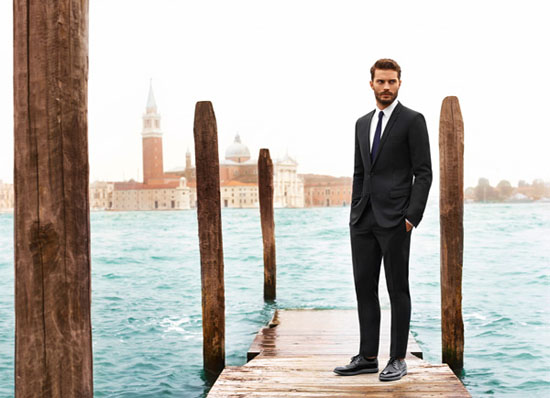In January 2014, HOGAN was very pleased to announce that Jamie Dornan became the advertising spokesperson for the Spring/Summer 2014 collection. The event was shot in Jamie Dornan's album in an enchanting Venice. The photographer was Alasdair Mclellan. Dornan's extraordinary personal charm gives the whole set of photographic works a modern and elegant temperament. It is a perfect interpretation of HOGAN's unique modern lifestyle. Dornan said: "HOGAN is a cool fashion Italian brand. Such a brand has a kind of maverick temperament, HOGAN is just one of them." This season's advertising embodies Jamie Dornan wearing a series of casual and elegant high-quality HOGAN shoes and accessories. Jamie Dornan endorsed HOGAN 2014 men's advertisements in spring and summer Tie-dye is a modern term invented in the mid-1960s in the United States (but recorded in writing in an earlier form in 1941 as "tied-and-dyed", and 1909 as "tied and dyed" by Luis C. Changsut, referenced below)[1] for a set of ancient resist-dyeing techniques, and for the products of these processes. The process of tie-dye typically consists of folding, twisting, pleating, or crumpling fabric or a garment and binding with string or rubber bands, followed by application of dye(s).[2] The manipulations of the fabric prior to the application of dye are called resists, as they partially or completely prevent the applied dye from coloring the fabric. More sophisticated tie-dyes involve additional steps, including an initial application of dye prior to the resist, multiple sequential dye and resist steps, and the use of other types of resists (stitching, stencils) and discharge. Tie-dye Tie-dye Shaoxing Yingcai Textiles Co.,Ltd , https://www.blg-yc.com
Unlike regular resist-dyeing techniques, tie-dye is characterized by the use of bright, saturated primary colors and bold patterns. These patterns, including the spiral, mandala, and peace sign, and the use of multiple bold colors, have become cliched since the peak popularity of tie-dye in the 1960s and 1970s. The vast majority of currently produced tie-dyes use these designs, and many are mass-produced for wholesale distribution. However, a new interest in more 'sophisticated' tie-dye is emerging in the fashion industry, characterized by simple motifs, monochromatic color schemes, and a focus on fashionable garments and fabrics other than cotton.[3] A few artists[4][5][6] continue to pursue tie-dye as an art form rather than a commodity.
In January 2014, HOGAN was very pleased to announce that Jamie Dornan became the advertising spokesperson for the Spring/Summer 2014 collection.
November 10, 2020